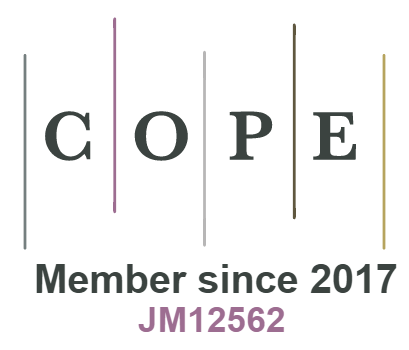The Internet of Things (IoT) and Social Interaction: Influence of Source Attribution and Human Specialization
DOI:
https://doi.org/10.18034/ei.v9i1.526Keywords:
IoT, Source Attribution, Specialization Source, Human-IoT interactionAbstract
The evolvement of IT has open new doors in connecting many devices to the worldwide web that successively produce data around the physical setting using the IoT. However, the system of message turns out to be slightly intricate in human specialization-internet of things communication for the reason that the IoT is a system including diverse objects transferring data This study examines the hypothetical pathway by which the changes in source attribution that is multiple against single and specialization that is multi-functionality against single functionality of IoT devices affect the quality of human- internet of things interaction. The result from the study obtained from 80 participants that took part in the experiment shows that multiple source attribution improves the condition of information basically for the low-involvement people supports further probes the multiple source effects. However, this study recommends improvement of attribution source and human specialization-IoT.
Downloads
References
Addington, D.W. (1971).The effect of vocal variations on ratings of source credibility. Speech Monographs, 38, 242–247. DOI: https://doi.org/10.1080/03637757109375716
Ahmed, A. A. A., Donepudi, P. K., & Asadullah, A. B. M. (2020). Artificial Intelligence in Clinical Genomics and Healthcare. European Journal of Molecular & Clinical Medicine, 7(11), 1194-1202, https://ejmcm.com/?_action=article&au=24014
Biocca, F. (1997).The cyborg’s dilemma: Progressive embodiment in virtual environments. Journal of Computer-Mediated Communication, 3(2). DOI: https://doi.org/10.1111/j.1083-6101.1997.tb00070.x
Borgia, E. (2014).The Internet of things vision: Key features, applications, and open issues. Computer Communications, 54, 1–31. DOI: https://doi.org/10.1016/j.comcom.2014.09.008
Chaiken, S. (1987). The heuristic model of persuasion. In M. Zanna, J. Olson, & C Herman (Eds.), Social influence:The Ontario symposium (Vol. 5, pp. 143–177). Hillsdale, NJ: Erlbaum.
Cohen, M. H., Giangola, J. P., & Balogh, J. (2004). Voice user interface design. Redwood City, CA: Addison-Wesley.
Donepudi, P. K., Ahmed, A. A. A., Hossain, M. A., & Maria, P. (2020a). Perceptions of RAIA Introduction by Employees on Employability and Work Satisfaction in the Modern Agriculture Sector. International Journal of Modern Agriculture, 9(4), 486–497. https://doi.org/10.5281/zenodo.4428205
Donepudi, P. K., Ahmed, A. A. A., Saha, S. (2020b). Emerging Market Economy (EME) and Artificial Intelligence (AI): Consequences for the Future of Jobs. Palarch’s Journal of Archaeology of Egypt/Egyptology, 17(6), 5562-5574. https://archives.palarch.nl/index.php/jae/article/view/1829
Harkins, S. G. & Petty, R. E. (1981).The effects of source magnification of cognitive effort on attitudes: An information processing view. Journal of Personality and Social Psychology, 40, 401–413. DOI: https://doi.org/10.1037/0022-3514.40.3.401
Hayes, A. F. (2013). Introduction to mediation, moderation, and conditional process analysis. NewYork: Guilford Press.
Kim, K. J., & Sundar, S. S. (2014). Does screen size matter for smartphones? Utilitarian and hedonic effects of screen size on smartphone adoption. Cyberpsychology, Behavior, and Social Networking, 17(7), 466–473. DOI: https://doi.org/10.1089/cyber.2013.0492
Kim, K. J., Park, E., & Sundar, S. S. (2013). Caregiving role in human–robot interaction: A study of the mediating effects of perceived benefit and social presence. Computers in Human Behavior, 29(4), 1799–1806. DOI: https://doi.org/10.1016/j.chb.2013.02.009
Kim, K.J. (2016). Interacting Socially with the Internet of Things (IoT): Effects of Source Attribution and Specialization in Human–IoT Interaction. Journal of Computer-Mediated Communication, pp. 1-16. DOI: https://doi.org/10.1111/jcc4.12177
Koh, Y. J., & Sundar, S. S. (2010). Heuristic versus systematic processing of specialist versus generalist sources in online media. Human Communication Research, 36(2), 103–124. DOI: https://doi.org/10.1111/j.1468-2958.2010.01370.x
Kopetz, H. (2011). Real-time systems: Design principles for distributed embedded applications. NewYork: Springer. DOI: https://doi.org/10.1007/978-1-4419-8237-7
Lakshmi Narayana S., Suneetha Devi J., Bhargav Reddy I., Harish Paruchuri. (2012). Optimizing Voice Recognition using Various Techniques. CiiT International Journal of Digital Signal Processing, 4(4), 135-141
Langer, E. L. (1989).Minding matters: The consequences of mindlessness-mindfulness. In L. Berkowitz (Ed.), Advances in experimental psychology, vol. 22 (pp. 137–173). San Diego, CA: Academic Press.
Lee, J., Kim, K. J., Lee, S., & Shin, D. (2015). Can autonomous vehicles be safe and trustworthy? Effects of appearance and autonomy of unmanned driving systems. International Journal of Human–Computer Interaction, 31(10), 682–691. DOI: https://doi.org/10.1080/10447318.2015.1070547
Lee, K. M., Peng,W., Jin, S, & Yan, C. (2006). Can robots manifest personality? An empirical test of personality recognition, social responses, and social presence in human-robot interaction. Journal of Communication, 56(4), 754–772. DOI: https://doi.org/10.1111/j.1460-2466.2006.00318.x
Leshner, G., Reeves, B., & Nass, C. (1998). Switching channels: The effects of television channels on the mental representations of television news. Journal of Broadcasting & Electronic Media, 42(1), 21–33. DOI: https://doi.org/10.1080/08838159809364432
Macho, S., & Ledermann, T. (2011). Estimating, testing, and comparing specific effects in structural equation models: The phantom model approach. Psychological Methods, 16(1), 34–43. DOI: https://doi.org/10.1037/a0021763
Movva, L., Kurra, C., Koteswara Rao, G., Battula, R. B., Sridhar, M., & Harish, P. (2012). Underwater Acoustic Sensor Networks: A Survey on MAC and Routing Protocols. International Journal of Computer Technology and Applications, 3(3).
Nass, C., & Moon, Y. (2000). Machines and mindlessness: Social responses to computers. Journal of Social Issues, 56(1), 81–103. DOI: https://doi.org/10.1111/0022-4537.00153
Nass, C., Moon, Y., & Carney, P. (1999). Are respondents polite to computers? Social desirability and direct responses to computers. Journal of Applied Social Psychology 29(5), 1093–1110. DOI: https://doi.org/10.1111/j.1559-1816.1999.tb00142.x
Nass, C., Reeves, B., & Leshner, G. (1996). Technology and roles: A tale of two TVs. Journal of Communication, 46(2), 121–128. DOI: https://doi.org/10.1111/j.1460-2466.1996.tb01477.x
Ohanian, R. (1990). Construction and validation of a scale to measure celebrity endorsers’ perceived expertise, trustworthiness, and attractiveness. Journal of Advertising, 19(3), 39–52. DOI: https://doi.org/10.1080/00913367.1990.10673191
Rahman, M. M., Chowdhury, M. R. H. K., Islam, M. A., Tohfa, M. U., Kader, M. A. L., Ahmed, A. A. A., & Donepudi, P. K. (2020). Relationship between Socio-Demographic Characteristics and Job Satisfaction: Evidence from Private Bank Employees. American Journal of Trade and Policy, 7(2), 65-72. https://doi.org/10.18034/ajtp.v7i2.492 DOI: https://doi.org/10.18034/ajtp.v7i2.492
Rindskopf, D. (1984). Using phantom and imaginary latent variables to parameterize constraints in linear structural models. Psychometrika, 49(1), 37–47. DOI: https://doi.org/10.1007/BF02294204
Sundar, S. S. (2000). Multimedia effects on processing and perception of online news: A study of picture, audio, and video downloads. Journalism & Mass Communication Quarterly, 77(3), 480–499. DOI: https://doi.org/10.1177/107769900007700302
Sundar, S. S., Knobloch-Westerwick, S., & Hastall, M. R. (2007). News cues: Information scent and cognitive heuristics. Journal of the American Society for Information Science and Technology, 58(3), 366–378. DOI: https://doi.org/10.1002/asi.20511
Vadlamudi, S. (2015). Enabling Trustworthiness in Artificial Intelligence - A Detailed Discussion. Engineering International, 3(2), 105-114. https://doi.org/10.18034/ei.v3i2.519
Vadlamudi, S. (2016). What Impact does Internet of Things have on Project Management in Project based Firms?. Asian Business Review, 6(3), 179-186. https://doi.org/10.18034/abr.v6i3.520
Vadlamudi, S. (2020). Internet of Things (IoT) in Agriculture: The Idea of Making the Fields Talk. Engineering International, 8(2), 87-100. https://doi.org/10.18034/ei.v8i2.522 DOI: https://doi.org/10.18034/ei.v8i2.522
Vadlamudi, S. (2021). The Economics of Internet of Things: An Information Market System. Asian Business Review, 11(1), 35-40. https://doi.org/10.18034/abr.v11i1.523
Yan, Z., Zhang, P., & Vasilakos, A. V. (2014). A survey on trust management for Internet of Things. Journal of Network and Computer Applications, 42, 120–134. DOI: https://doi.org/10.1016/j.jnca.2014.01.014
Zaichkowsky, J. L. (1985). Measuring the involvement construct. Journal of Consumer Research, 12(3), 341–352. DOI: https://doi.org/10.1086/208520
--0--
Downloads
Published
Issue
Section
License
Engineering International is an Open Access journal. Authors who publish with this journal agree to the following terms:
- Authors retain copyright and grant the journal the right of first publication with the work simultaneously licensed under a CC BY-NC 4.0 International License that allows others to share the work with an acknowledgment of the work's authorship and initial publication in this journal.
- Authors are able to enter into separate, additional contractual arrangements for the non-exclusive distribution of the journal's published version of their work (e.g., post it to an institutional repository or publish it in a book), with an acknowledgment of its initial publication in this journal. We require authors to inform us of any instances of re-publication.









